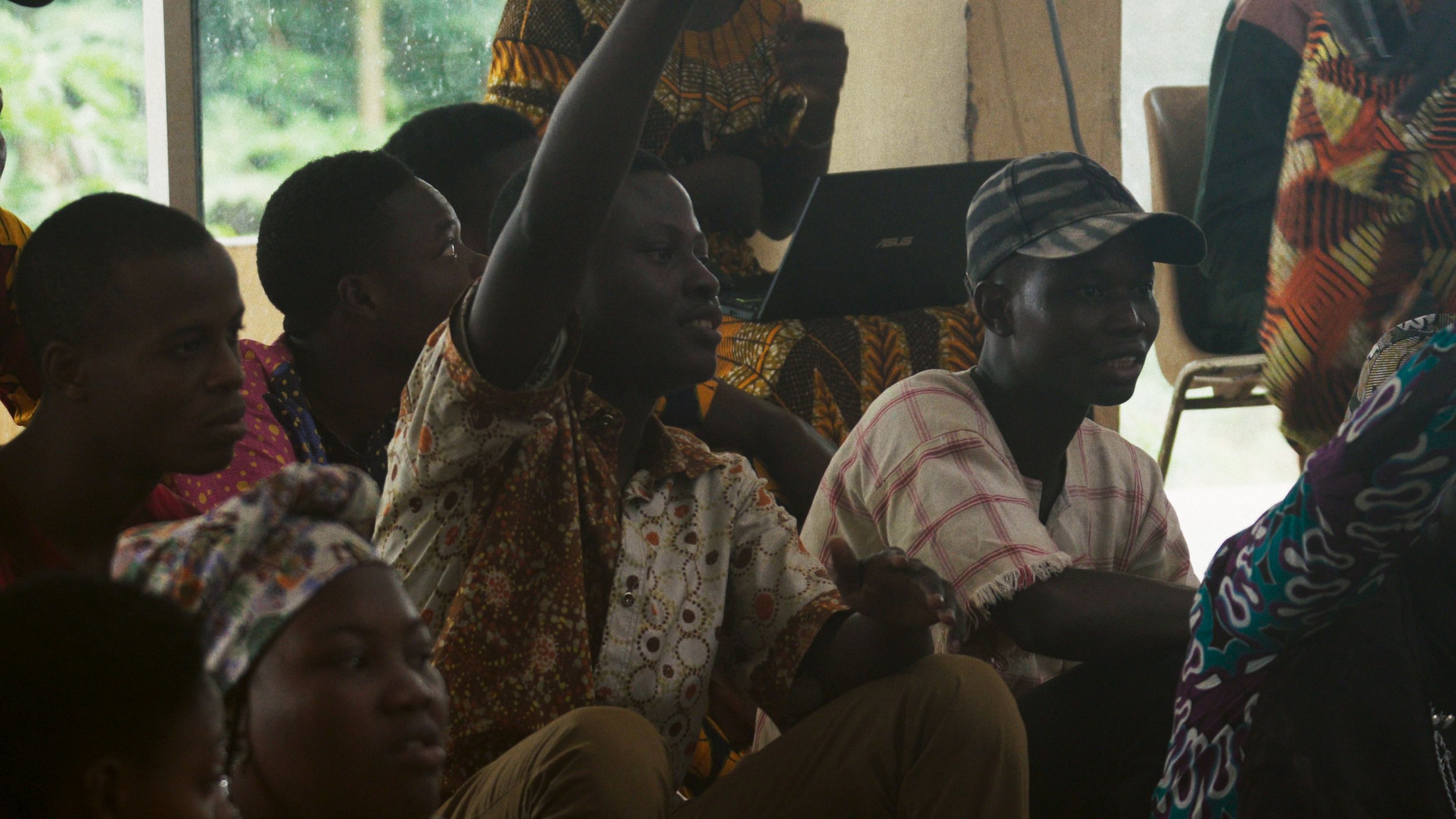“Dahomey” - Documentary Film Review
Just last week, the documentary Artifact War was covered on this site. The central concept of that film is the return of stolen artifacts, an act that is growing more popular as colonizing countries begin to reckon with their past. Mati Diop’s Dahomey follows a similar story. In November of 2021, twenty-six royal treasures of the Kingdom of Dahomey were returned to their original homes. After 130 years of captivity, these treasures are returning to what is now the present-day Republic of Benin, but their return is not celebrated by all. Dahomey’s approach to this subject is looser than most might expect, and it’s structured differently than Artifact War, but the discussion generated by both films is essential to improving on the mistakes of past generations.
Dahomey is a dramatized retelling of the return of twenty-six treasures. If you’re thinking that twenty-six feels like a small number of artifacts to be returned, you’d be correct. In total, France has over 7,000 items that were taken from the Kingdom of Dahomey, but has only agreed to part with a miniscule fraction. Serving as a narrator for Dahomey is object 26, as it has been named by the cataloguers in the French museum. In actuality, the numerically named object is a statue that represents King Ghézo. The audience follows this artifact as a haunting voiceover by Makenzy Orcel serves as the inner thoughts of the statue on its journey back to where it was created.
courtesy of MUBI
There’s a hypnotic, trancelike quality to Dahomey that lures the audience into its tale. By no means is this a traditional documentary. It doesn’t fully fit into the observational subgenre either. It’s something more akin to an experimental film with a striking resemblance, in terms of style, to this year’s Pepe. Both are asking the audience to go on a journey with them without holding their hand and without offering a completely clear look at the experience they’re documenting. There are people who will come into the theater for Dahomey expecting a series of talking heads explaining the logistics of everything involved with this statue and the twenty-five other treasures being returned. Those people will not have their expectations met.
Dahomey is more interested in the feelings it can invoke from its images, editing, and musical score than in regurgitating exact events in an analytical manner. This decision, while annoying to some, speaks to the debate that Dahomey is documenting. When considering the return of these artifacts, people are split on how they feel. It’s impossible to talk about the return of the treasures without thinking about the context in which they exist and the emotional reactions they elicit. Audiences don’t need someone sitting on a stool with a school-picture-day backdrop behind them explaining the complicated trauma that comes from seeing these treasures leave one museum for another. We can see it in the face of the young man who helped load the crates and who lingers to see one of the treasures on display.
The documentary speaks to a divide of what purpose the genre exists to serve. Is it supposed to be experts in a room answering questions or documenting a pivotal moment in time? Do documentaries have the freedom to breathe creativity into their bones? To maybe not give us all the answers to the questions that we have, but to give us an introduction to a world we aren’t familiar with in a way that leads with artistry? It’s not a question of style over substance, it’s a matter of changing our expectations, and that’s exactly what Dahomey does.
courtesy of MUBI
“I’m torn between the fear of not being recognized by anyone and not recognizing anything,” utters the voice of the statue of King Ghézo. Toward the end, the film spends some time observing young people debating their feelings about the return of these objects. Some cry, others think it’s a lame political move, and others fall somewhere in the middle. One mentions that it’s not enough to merely have these treasures on display, but the government must help make them accessible. Are children who live in more rural areas going to be bused in to see the objects on display? Is the price of admission affordable? Another young person mentions that while these tangible pieces of their past were overseas, the intangible parts of their culture are alive and well here.
All of these discussions are addressing the issue of material versus immaterial heritage. This is a question that Dahomey doesn’t have an answer to, nor does it need to in order to be a compelling documentary. Dahomey infuses artistic panache into its timely story of the painful reclamation of one’s heritage.
support your local film critic!
~
support your local film critic! ~
Beyond the Cinerama Dome is run by one perpetually tired film critic
and her anxious emotional support chihuahua named Frankie.
Your kind donation means Frankie doesn’t need to get a job…yet.
Follow me on BlueSky, Instagram, Letterboxd, & YouTube. Check out Movies with My Dad, a new podcast recorded on the car ride home from the movies.


